

Marvel Comics Presents ran for 175 issues from 1988 until 1995. Each issue included four eight-page stories with typically two or three on-going features (and no ads). It spotlighted some of the leading creators of mainstream comics over a period of precipitous economic growth and even more rapid decline. Reading through it is an opportunity to revisit any number of weird aspects of 90s superhero comics. This blog is a primitive, oddly regimented, manifestly scattershot crawl through an often disappointing but occasionally splendid comic. All image copyrights are Marvel's. Issue credits linked below. Updated on Wednesdays.
Marvel Comics Presents #8: Early December 1988(11.13.19)
Credits: grandcomicsdatabase
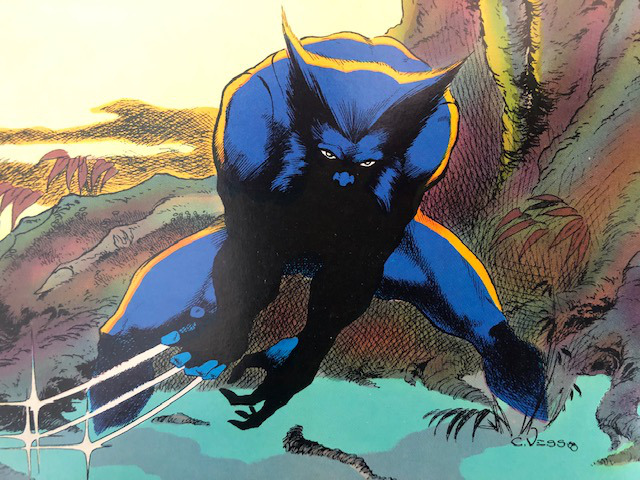
Charles Vess dips in to offer a contorted, blacked out, but generally lovely Wolverine cover highlighted by a mountainous, elephantine Man-Thing. Thin lines throughout the piece make for a lovely Vessian touch along with an oddly elegant, Moebiusian Iron Man on the rear. Man-Thing's pupils are admittedly off-model, but it's nothing short of refreshing to see Vess' painterly dark hues here rather than another buffed out 80s Wolverine.
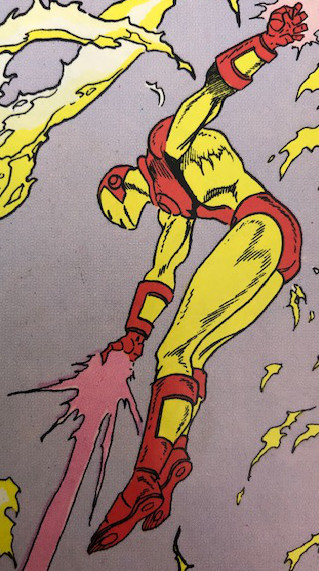
A. Wolverine, "Save the Tiger" [8/10]
Logan and Jessan infiltrate Roche's crime compound with some reliable but not especially exciting rhythms. Apart from a dazzling panel of dobermans writhing in angst, the lowkey star is the Oliver coloring which manages surprising depth of field and intelligibility despite being awash in blues. Buscema and Janson break with their trend here and offer up the installment's splash as the second page and, in keeping with their impressive work on the Madripoor setting, articulate Roche's compound as coherent, grounded physical backdrop. The action remains tolerably punchy here, though Claremont's willingness to hit upon the smaller action moments with tertiary characters diffuses the focus of the story especially given the large number of heavies he's already wheeled in. (You ask: but did Razor First cross his "arms" again? Yes, yes he did. Stay tuned for the "super-cut" upon the end of this feature.)
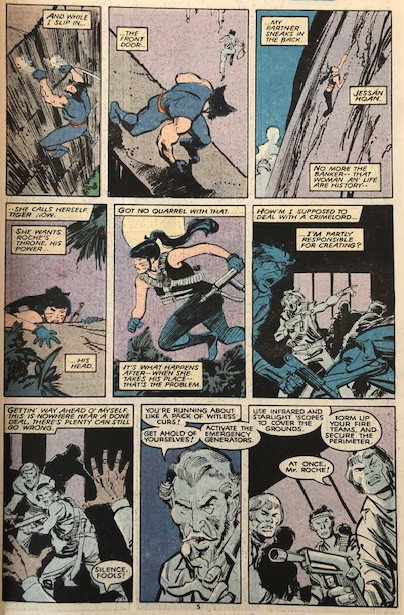
B. Man-Thing, "Elements of Terror" [8/12]
Jody Choate's jingoistic, third person windbagging about freedom continues at the forefront here with Gerber perfectly aping vapid political rhetoric and then pivoting to Jody telling his wife he needs "one more kill." Man-Thing receives considerably more attention in this installment and some larger panels offer Sutton the chance to build out the vegetative textures. As Man-Thing kills the ill-fated hit squad there's a panel with what ought to have been hands going through human eyes that was surely revised on CCA grounds in favor of something all but impossible though not all that less grisly. (Note Man-Thing's fingers conspicuously darting upwards from the glasses rather than disappearing into the head.) Gerber and Sutton deserve continuing credit for managing a sense of physical place and setting despite flitting between Capitol Hill, the swamp, and more in eight pages.
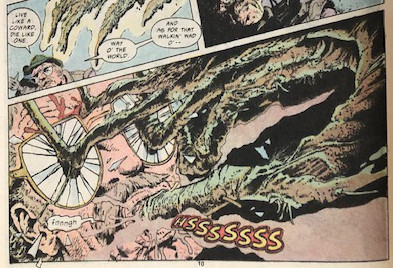
C. Shang-Chi, "Crossing Lines" [8/8]
Narrative oddities mark this final installment, which is distinguished by a modest uptick in color and a continued slide in the rest of the art. Tarr, Reston, Shang-Chi, and the Cat attack Argus' compound with the barest minimum of kung-fu action. (I take the panel below to be the best of the entire eight issue feature.)
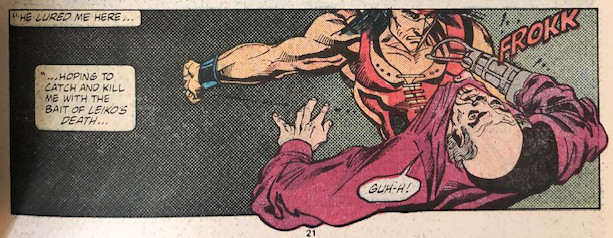
They discover that Leiko is alive, though apparently Shang-Chi is doused with a poison that will kill him in an indeterminate amount of time. (I can imagine no more bizarre way to stave off even the remotest sense of closure among readers.) The Cat slinks away, serving no narrative purpose. Argus receives thrashing void of catharsis, marked by the removal of his inconstantly drawn prosthetic, and Leiko's amputated hand simply goes unmentioned. Weird choices are piled upon weird choices in this feature, which has been marred by a conspicuous absence of kung fu mastery. There's no question the feature was a dreary failure from start to finish. The interesting matter is why things went immediately downhill. A less compressed version of this overarching story, with room for some of the visual play Moench drew out of Day and Gulacy would surely have been an improvement. It seems, at any rate, that either the Moench-Grindberg collaboration stalled or ground out or, alternatively, Grindberg's style just wasn't delicate enough for the physicality that good martial arts comics require. Whatever. Good riddance to this.
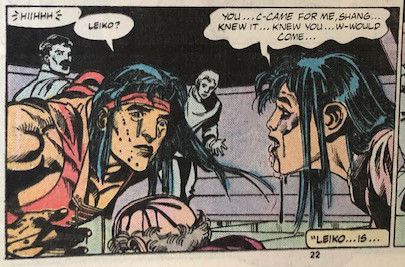
D. Iron Man, "One Day at a Time"
Solly Fisch relies upon the well worn Iron Man/alcoholism beats of "Demon in a Bottle" to summon up an AA meeting wraparound that's far more compelling than a dull yet pyrotechnic laden battle with Zzzax. Telling the story via flashback is a narrative peculiarity for MCP, but there's an element of intrigue to the installment owing to the cryptic dedication at the end, which presumably marks a personal dimension to the story. Unfortunately, there's really no substantive tie between Tony's narration and the fairly hackneyed superhero fight tropes. Javier Saltares drops some solid panels and a visually appealing Zzzax, but, apart from some screentone highway textures, it's really only the quiet AA wraparound moments that carry any weight.
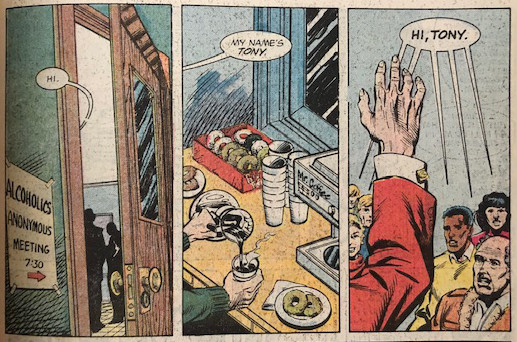
Power Ranking: Man-Thing (B+), Wolverine (B), Iron Man (C+), Shang-Chi (D)